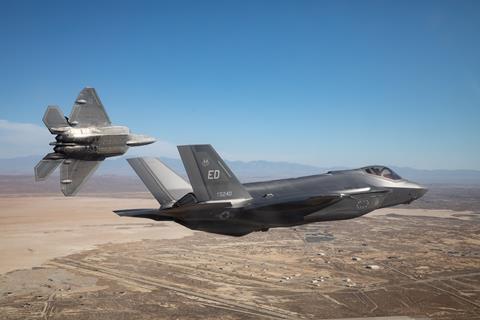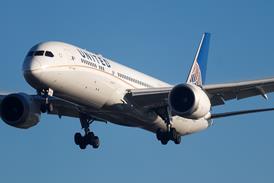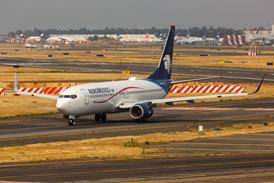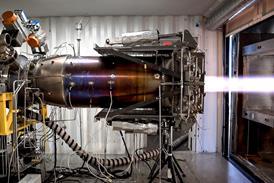The US Air Force (USAF) has demonstrated the ability to rapidly update and deploy software for the Lockheed Martin F-22 and F-35 fighters, offering greatly improved flexibility for rapidly evolving tactical situations.
The work saw an F-35A take flight with software applications that had been previously tested on the F-22 – the first time the same tactical software has been used on both types, according to the USAF’s 412th Test Wing.

Following the flight, the software applications were updated by developers at Utah’s Hill AFB and flown at California’s Edwards AFB less than 24h later.
The flight was part of a project involving test pilots and defence software developers. According to the USAF, it shows the ability to use the same software across different aircraft, the ability to source software from more suppliers, and the ability to update software “30-60 times” faster than previously and at a much lower cost.
Traditionally, combat aircraft relied solely on a prime contract for software updates and integration, often resulting in extended timelines and high costs.
“The ability to use common software across the F-35 and F-22 is going to dramatically change how we bring capabilities to the front line,” says Lieutenant Colonel Raven LeClair, project co-founder and F-35 test pilot.
“Now, instead of having to define, purchase, test and field a software capability on each aircraft individually, we can gain a lot of efficiencies by developing a capability once and fielding it on all [fifth-generation] fighters, saving hundreds of millions of dollars, if not more, in development costs and saving years in development time.”
The ability to rapidly update aircraft tactical software is especially useful for combat situations when new threats are identified. The work also emphasises reducing the vulnerability of stealth aircraft to cyberattacks.
In recent years the US military has placed an emphasis on better ways to update aircraft software, making updates more akin to updating an app on a personal device, as opposed to waiting months or years for big updates.
In September 2022, an F-22 conducted the first test with onboard software developed by a third party. In 2021, the USAF demonstrated the ability to update a Lockheed F-16’s electronic warfare (EW) system during flight.
A US Marine Corps (USMC) officer feels that rapid software updates will be an enabler for the US military’s Agile Combat Employment strategy, which involves creating dilemmas for adversaries such as China through the varied and unpredictable employment of airpower from diverse locations.
“This project helps to set the foundation required for agile combat employment,” says USMC Major Kyle McLeod, the project’s lead F-35 test pilot.
McLeod also hints that the work has an EW emphasis – in future conflicts, the electronic spectrum is likely to be highly dynamic and hotly contested.
“We need to be able to rapidly adapt and update our weapon systems based on emerging intel or changing conditions while executing distributed operations. We demonstrated just that with this test. We flew a set of applications at Edwards, updated the simulated threat dataset in the software from the development location at Hill AFB, and re-flew the software in less than 24 hours.”
The concept is being further developed under the USAF’s Innovation Portfolio.























